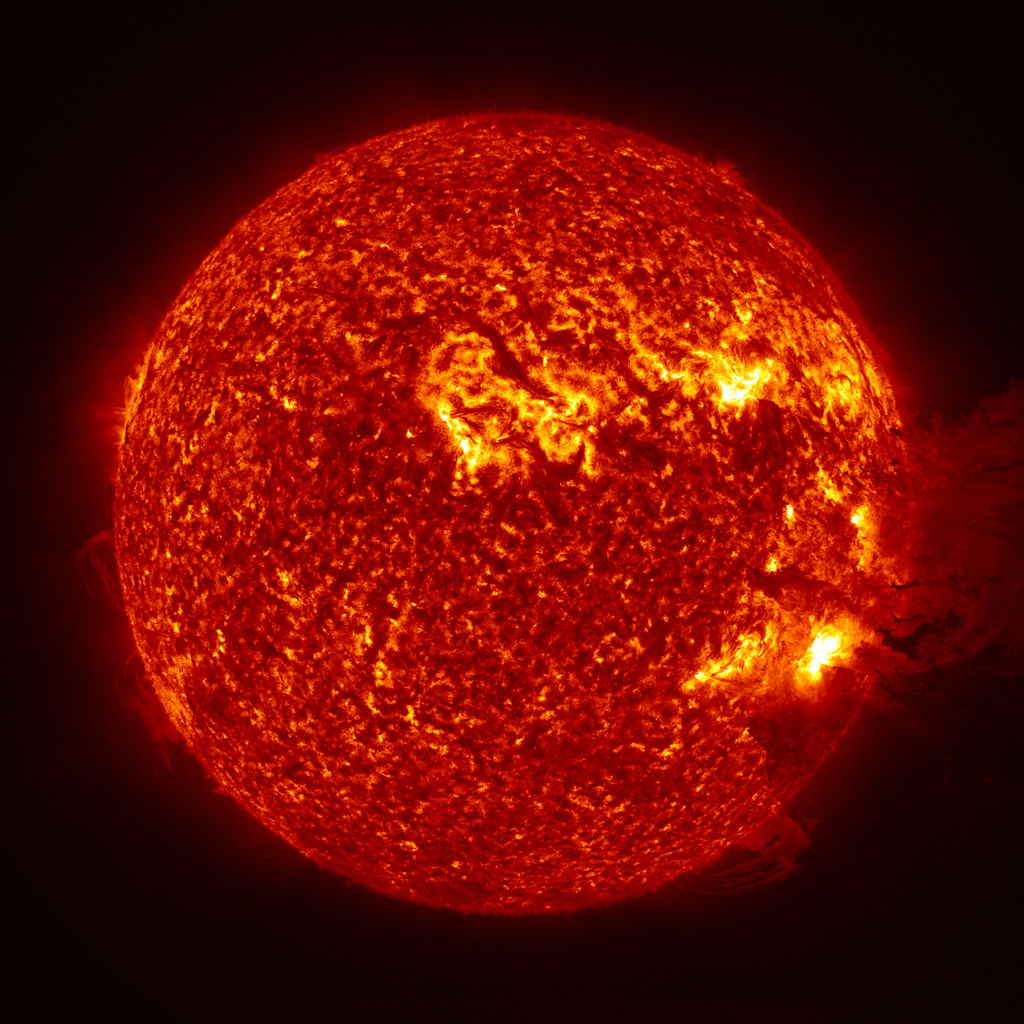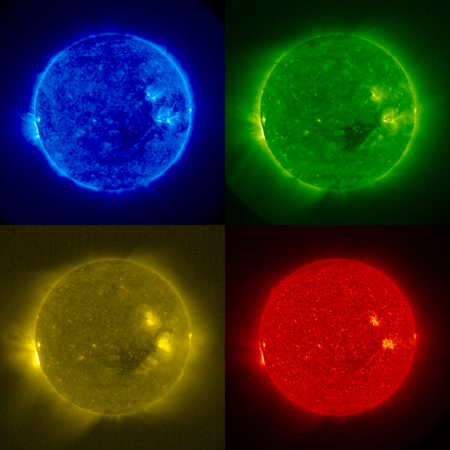In order to collect the information from a spacecraft observing the Sun, it has to be in a form that can be easily handled by the on-board computer and transmitted via a radio signal to a receiver on Earth. This is done by digitizing the data, i.e. turning the information received by the detectors (usually electrical signals) into a series of numbers. Since most computer software is written in languages that use binary code (bits of 1's and 0's for on-off states) the digitization is conventionally based on powers of 2. You are familiar with this even if you don't know it. For instance, you typically have 64, 128 or 256 colors to work with on your computer: each of these numbers is a power of 2; 2x2x2x2x2x2 = 26 = 64, 2x2x2x2x2x2x2x2 = 28 = 256.
A simple example of an image coded into binary numbers might be the following:
11000110111111011000001100000000111000
11000110110000011000001100000011000110
11111110111100011000001100000110000011
11111110111100011000001100000110000011
11000110110000011000001100000011000110
11000110111111011111101111110000111000 |
which can be decoded to read
When sending down data (telemetry) a satellite will send down a series of 1s and 0s, typically in groups of 8 or 12. Each group would contain all of the information need to translate the relevant data for a given pixel: e.g. intensity. This allows us to generate pictures like this from the raw 1s and 0s:

At this point in our story, the telescope on the satellite has taken a picture with its digital camera, coded the information in to binary numbers and transmitted them to a ground-station where we can reconstruct them into an image. Why is the above image red? It could easily have been blue, green or taupe. When looking at radiation which does not fall within the visible range of the electromagnetic spectrum (e.g. EUV or X-rays) we need to represent the variations in brightness in some understandable form. Using a range of colors to show these variations is the most convenient means and the most appealing to the human observer. This technique of using colors to represent brightness of a non-visible radiation is called representational color mapping: we chose red for the solar image above because this gives us the impression that the Sun is hot!
Examples of representational color images of the Sun

You can find out a lot more about why we use representational color images at NASA's SOHO site.
Back to today's topic